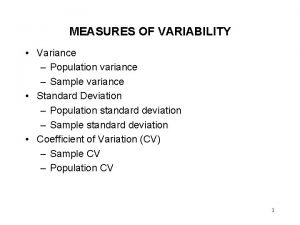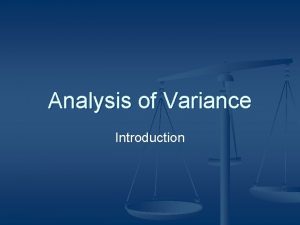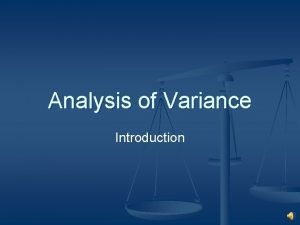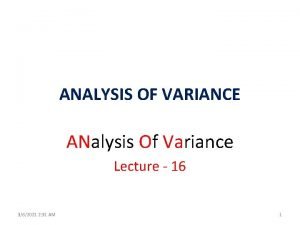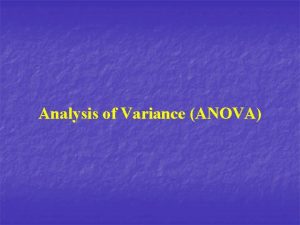Variance Analysis Variance Analysis Within the context of









- Slides: 9

Variance Analysis

Variance Analysis Within the context of management accounting, variance analysis studies differences between actual and budgeted figures and looks at the causes of these variances with a view to suggesting solutions.

Types of Variance Effects of variance Adverse Favourable Direct labour variances Variable cost variances Direct material variances Sales variances Variable production overhead variances Fixed production overhead vacancies

Favourable Variance Leads to a higher than expected profit When actual results are better than expected given variance is described as favourable variance. In common use favourable variance is denoted by the letter F.

Adverse Variance Reduces profit When actual results are worse than expected results given variance is described as adverse variance, or unfavourable variance. In common use adverse variance is denoted by the letter A or the letter U.

Reasons for Direct Material & Direct Labour Variances • • • Material price Lower or higher quality than standard quality Change in price by supplier or shortage of material Lower or higher quality than standard quality Theft Inexperienced operators Labour rate Unexpected wage increase Using higher or lower grade labour than normal on the work undertaken • Standard of training • Quality of material • Quality of equipment

Causes of Variances will occur if in any given production period the actual costs vary from the standard costs. For example, if the price paid for material bought during a given production period, differed from the standard (expected) price for that material, a material price variance will arise. Similarly if the amount of material actually used exceeded the standard (expected) usage a material usage variance will arise.

Usefulness of Variances to Management • Variances highlight to management that everything has not gone to plan • They highlight that problems may exist and direct management attention to them • If management are aware that there have been departures from standards they will be able to act on these • Variances will, if left unchecked, have an adverse effect on profitability • A favourable variance might be highlighted because of some unknown factor that could in the future be used to the advantage of the business

Inter-Relationship of Variances should not be viewed in isolation from each other. An adverse material price variance may be due to the fact that the material purchased was of a higher standard than normal leading to a favourable usage variance for that material because the higher quality may result in less wastage than normal.










